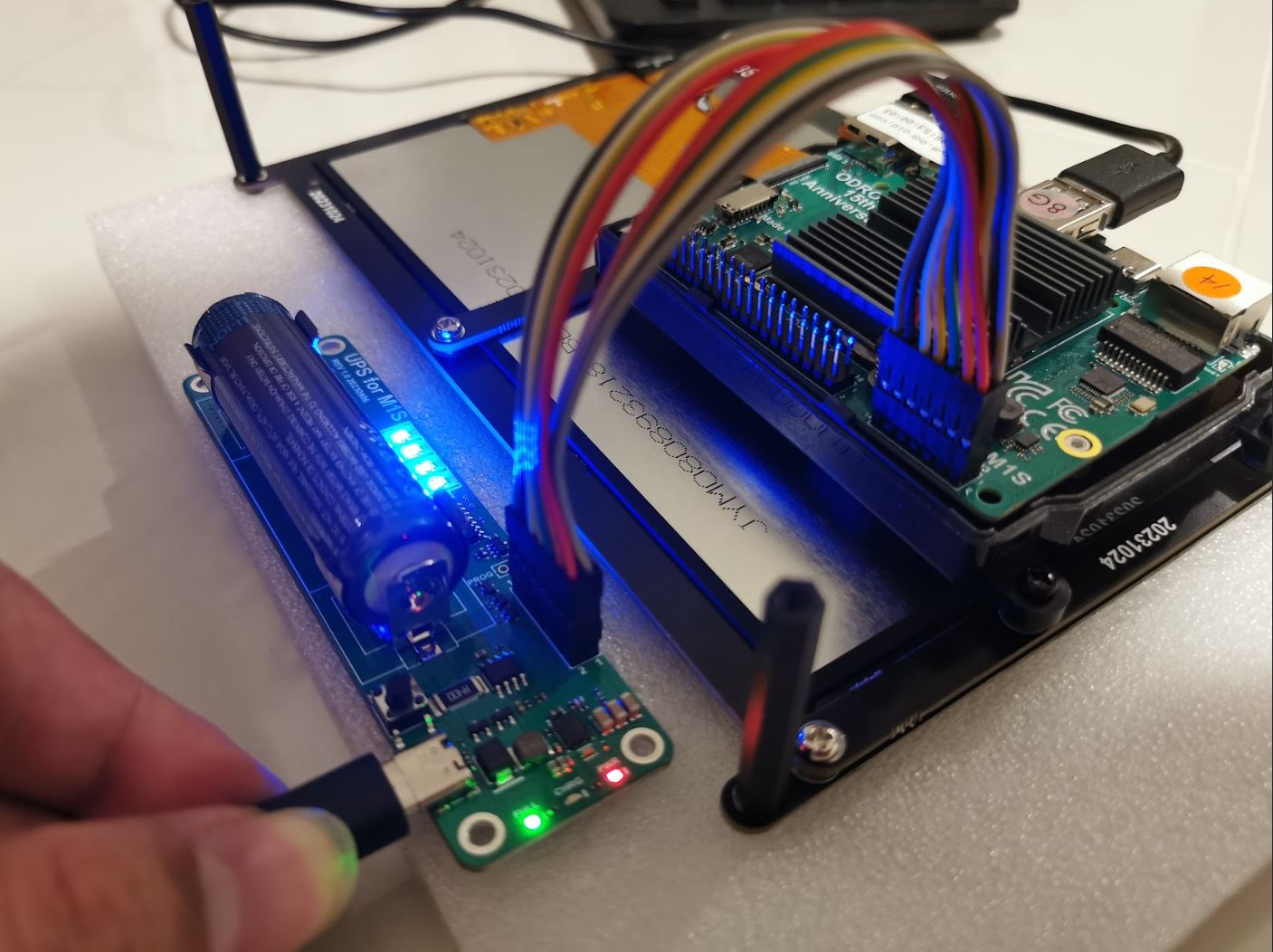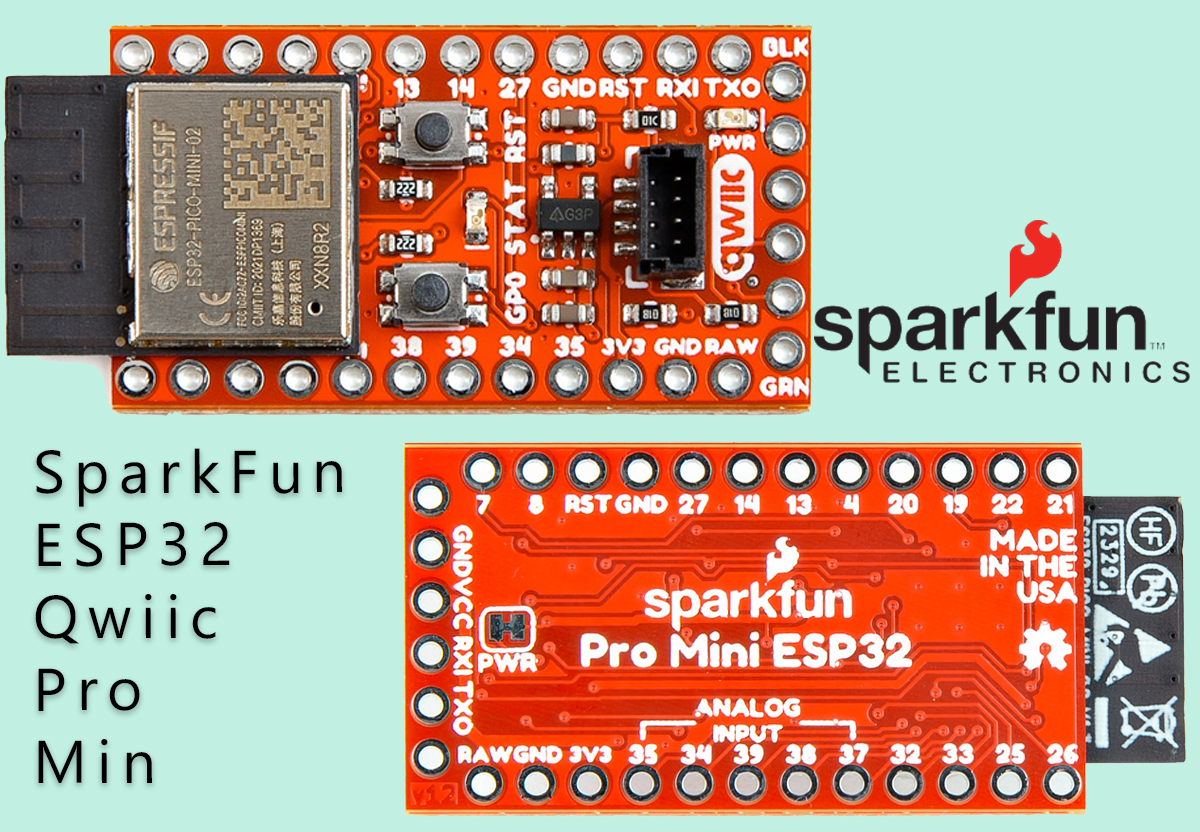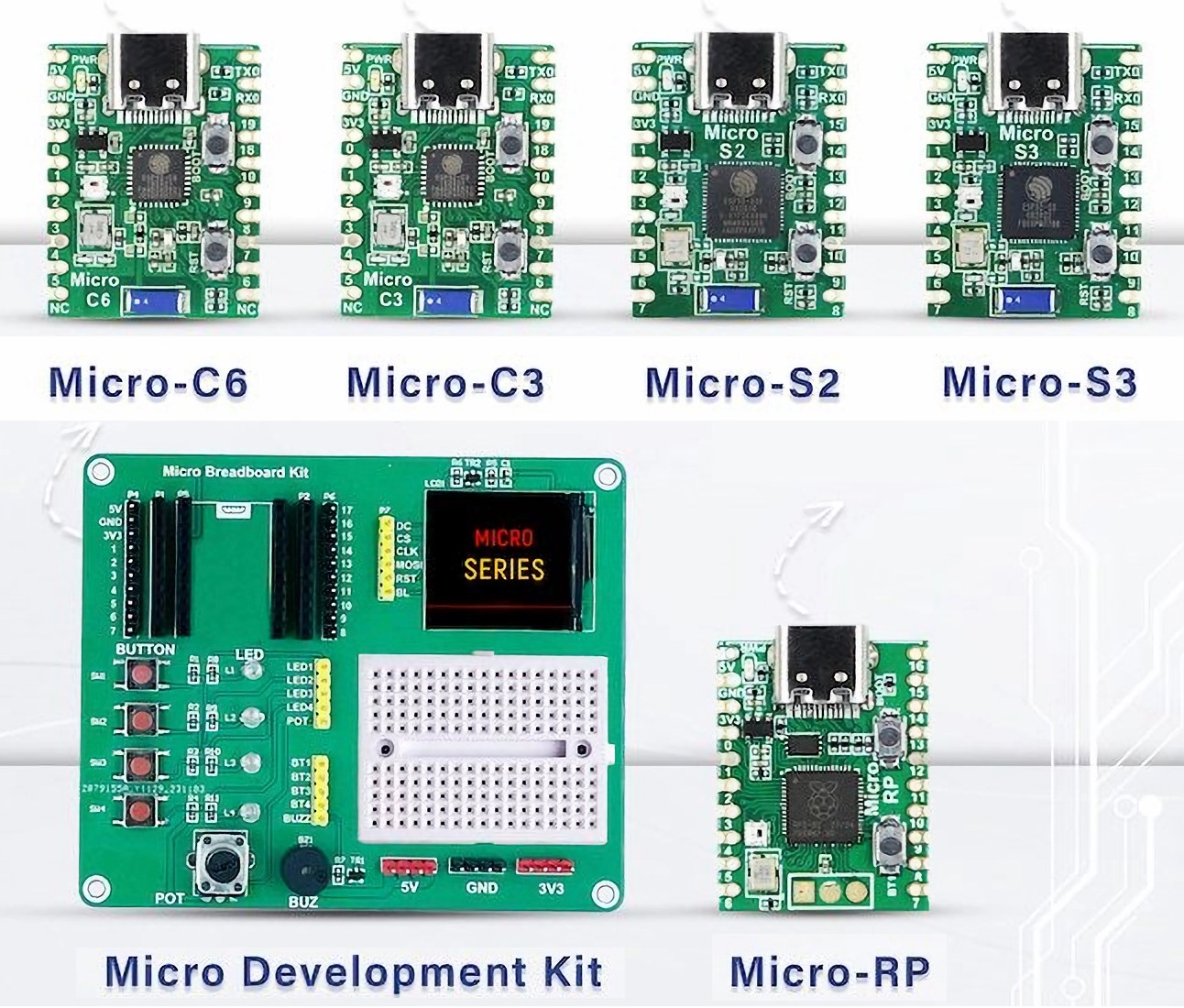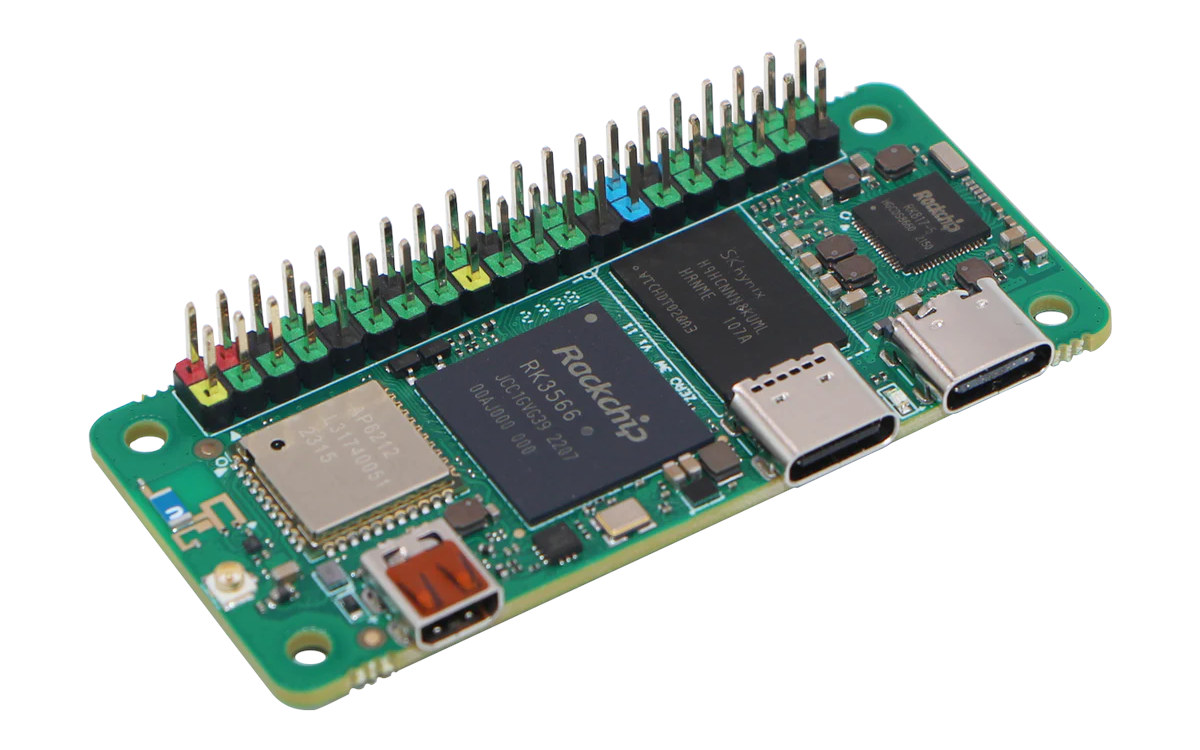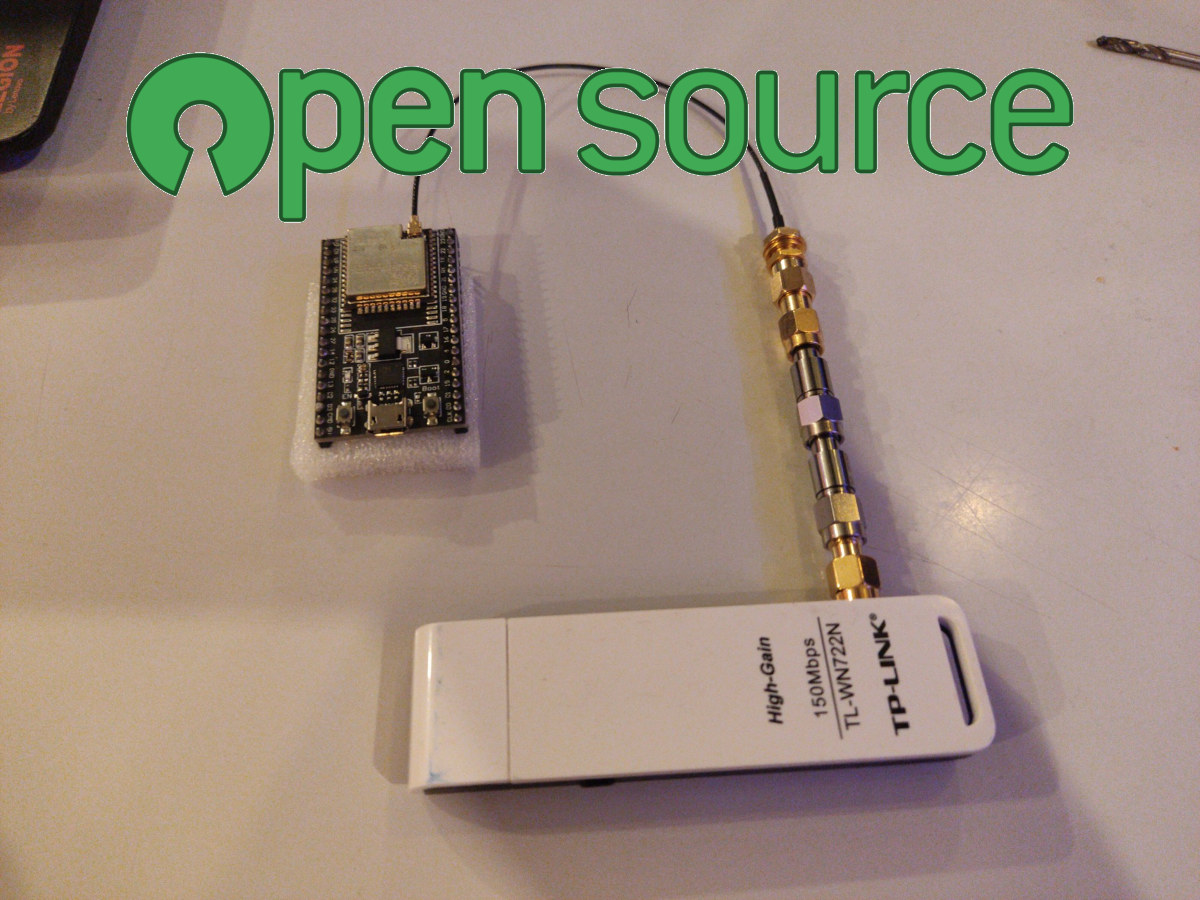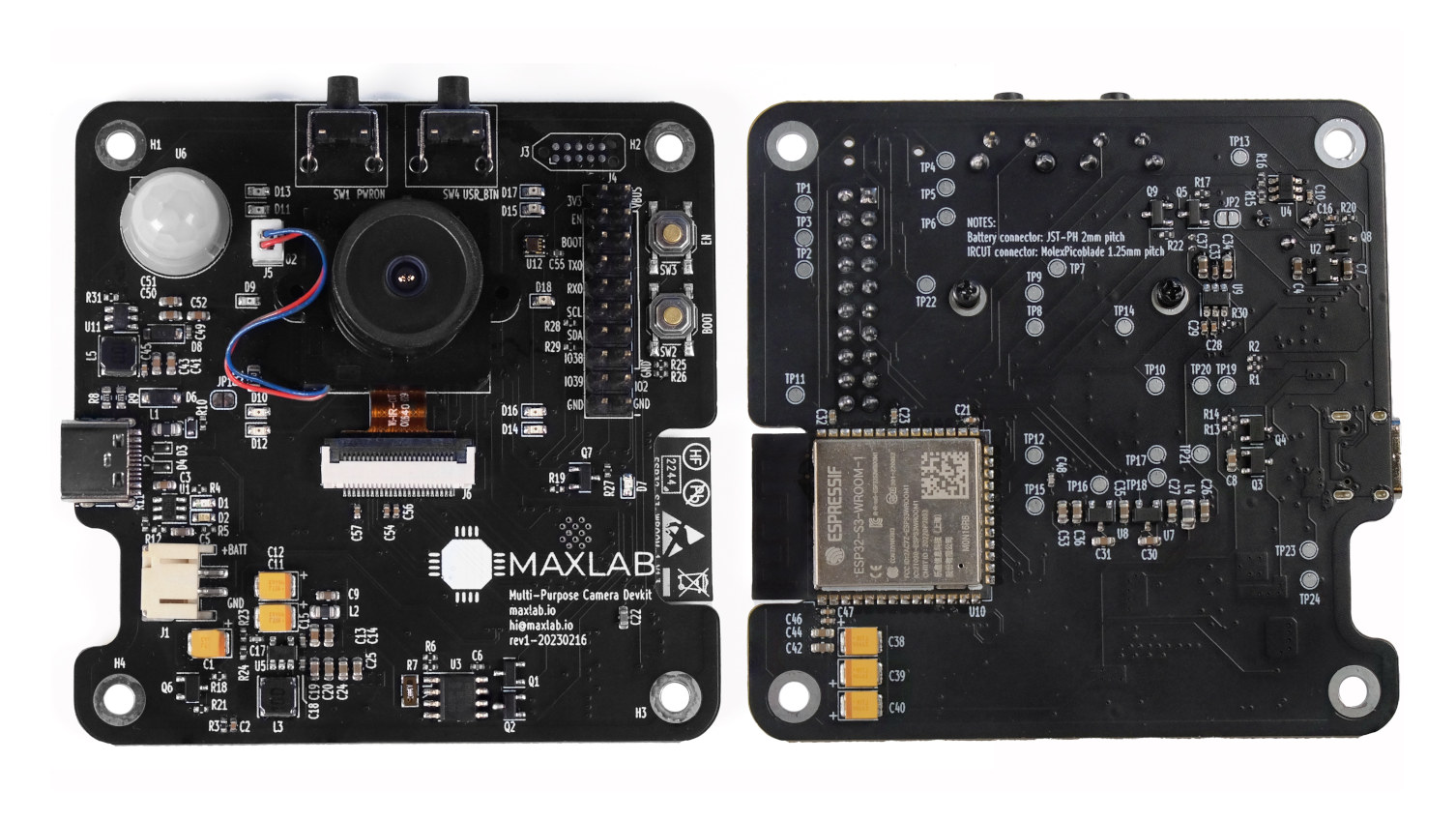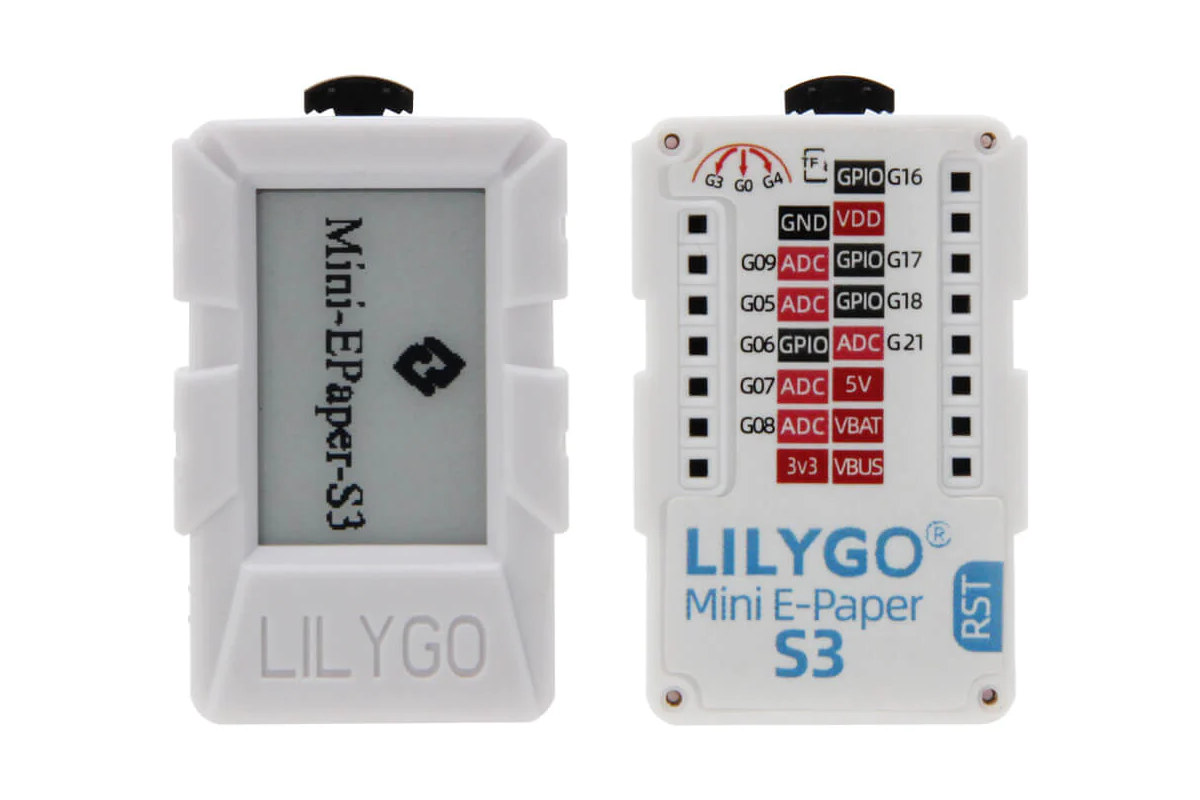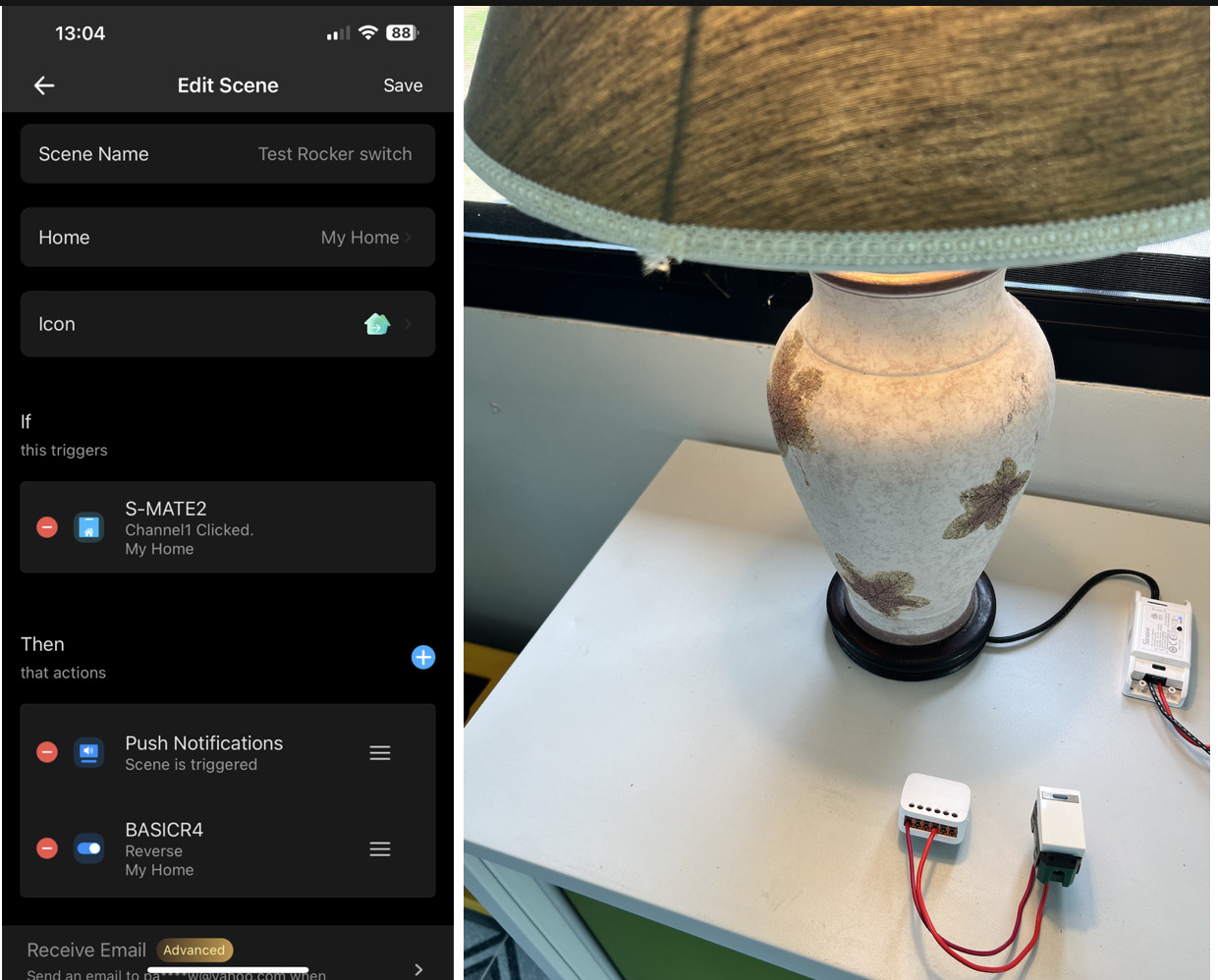Hardkernel ODROID-M1S single board board was recently launched to celebrate the company’s 15th anniversary. While the ODROID-M1 board was introduced with the Rockchip RK3568 SoC last year, the new ODROID-M1S board is smaller and cheaper starting at just $49 and comes with a Rockchip RK3566 SoC. Hardkernel sent us a sample of the ODROID-M1S board for review with 8GB of memory and 64GB of storage as well as accessories. Let’s unpack the box before trying it out with Ubuntu 20.04 Desktop and testing each accessory. ODROID-M1S unboxing with ODROID-Vu8S display, UPS kit, and WiFi dongle The review package we received from Hardkernel included the ORDROID-M1S SBC in its plastic enclosure, the VU8S 8-inch touchscreen display, a UPS board, and a dual-band WiFi 5 USB dongle. The UPS module comes without a battery, so we had to find an 18650 battery to use it. As we’ll see further below, the UPS […]
ESP32 Qwiic Pro Mini is an ESP32 board in Arduino Pro Mini form factor
SparkFun’s latest development board, the ESP32 Qwiic Pro Mini, puts the Espressif ESP32-PICO-MINI-02 on a compact Arduino Pro Mini footprint. It also includes an onboard QWICC connector for easy interfacing with a wide range of sensors and peripherals. We have already covered other Sparkfun dev boards like DataLogger IoT, Datalogger IoT – 9DoF, and SparkFun Thing Plus Matter you can check those out if interested. Like any other ESP32 board, this also uses an ESP32 microcontroller which features a 32-bit dual-core processor, 520kB of SRAM, 2MB of PSRAM, 8MB of flash memory, and 16 kB of additional SRAM in its RTC. It supports Bluetooth 4.2 and BLE and has ADC and DAC, touch detection, PWM, TWAI, Ethernet MAC, UART, SPI, SDIO, I2C, and I2S interfaces. As reported in a Hackster article, the board also features a Qwiic Connector for solderless connections to sensor boards and add-ons, positioned at a 90-degree angle […]
Microflex MCUs – Tiny USB development boards based on ESP32-S3, ESP32-S2, ESP32-C3, ESP32-C6, or Raspberry Pi RP2040 (Crowdfunding)
SB Components is back with yet another crowdfunding campaign this time with the Microflex MCUs USB development boards all with the same tiny form factor and offered with a choice of five microcontrollers namely Raspberry Pi RP2040, ESP32-S3, ESP32-S2, ESP32-C3, or ESP32-C6. Microflex MCUs share the same layout with a USB-C port for power and programming, a built-in RGB LED, two buttons for Boot and Reset/User, and two rows of 10-pin with through and castellated holes to access the GPIOs and power signals such as 5V, 3.3V, and GND. But they differ in terms of the processor used, wireless features, and available I/Os as shown in the table below which sadly lacks any information about the flash and eventual PSRAM… The illustration below includes some more details for the Micro-C6 with the main components, ports, and a pinout diagram. Programming the firmware for the ESP32-series can be done through the […]
Radxa Zero 3W SBC – Rockchip RK3566 SoC, 8GB RAM, WiFi 6 in Raspberry Pi Zero 2 W form factor
More Raspberry Pi Zero 2 W lookalikes are coming to market, as after the Allwinner H618-based Orange Pi Zero 2W, the Radxa Zero 3W has now been introduced with a 1.6 GHz Rockchip RK3566 processor and up to 8GB RAM, plus WiFi 6 and Bluetooth 5.4 connectivity, which makes it one of the most powerful Arm Linux SBCs in the compact Raspberry Pi Zero form factor. The board also comes with an optional eMMC flash with up to 64GB capacity, a microSD card, a micro HDMI port, two USB Type-C ports, a MIPI CSI camera connector, and of course, the usual 40-pin Raspberry Pi GPIO header. Radxa Zero 3W specifications: SoC – Rockchip RK3566 CPU – Quad-core Arm Cortex-A55 processor @ 1.6 GHz (Note the RK3566 is usually clocked at up to 1.8 GHz but may have been underclocked here due to heat issues at the higher frequency as the […]
ESP32 may soon get an open-source WiFi MAC layer
Most, if not all, WiFi hardware relies on closed-source binary blobs including ESP32 wireless MCU, but there’s now work underway to reverse engineer a WiFi MAC layer for the ESP32 to make it a truly open-source platform. Espressif ESP32 wireless microcontrollers already have an open-source framework (ESP-IDF) and toolchain, people can customize the code to some extent, but this excludes the wireless bits (Wi-Fi, Bluetooth, low-level RF functions) that are distributed as closed-source precompiled libraries integrated into the firmware. There were some efforts to provide an open-source stack for the BL602 chip but it never went anywhere, and the ESP32 may become the first target with an open-source driver without any blobs, excluding FPGA-based projects such as OpenWiFi. The early-stage implementation currently supports the following features: Sending WiFi frames Receiving WiFi frames Send an ACK packet as a reply to packets that are sent to the ESP32 Connect to an […]
Tokay Lite – A battery-powered no-code AI camera based on ESP32-S3 WiSoC (Crowdfunding)
Maxlab’s Tokay Lite is an OHSWA-certified AI camera based on ESP32-S3 WiFI and Bluetooth SoC that can be used for computer vision (e.g. facial recognition & detection) and robotics applications without the need to know programming languages since a web interface is used for configuration. The WiFi and Bluetooth AI camera also features night vision with four IR LEDs, an IR cut filter, light and PIR motion sensors, a 20-pin expansion connector with SPI and UART, support for an external RTC, and can take power from USB-C or a LiPo battery. Tokay Lite specifications: Wireless module ESP32-S3-WROOM-1 MCU – ESP32-S3 dual-core LX7 microprocessor @ up to 240 MHz with Vector extension for machine learning, 512 KB SRAM Memory – 8MB PSRAM Storage – 8MB SPI flash Connectivity – WiFi 4 and Bluetooth 5 with LE/Mesh PCB antenna Certifications – FCC/CE certification Camera OV2640 camera sensor (replaceable) via DVP interface Image Capabilities: […]
LILYGO Mini E-Paper Core IoT controller gets ESP32-S3 wireless microcontroller
LILYGO Mini E-Paper Core has gotten an upgrade to the ESP32-S3 wireless microcontroller. The IoT controller was first introduced in 2021 with an ESP32-PICO-D4 system-in-package, a 1.02-inch E-Paper display, and a few GPIOs on the back, and the company kept the same design for the ESP32-S3 model called “Mini E-Paper Core S3”. The tiny ESP32-S3 IoT controller can still be used for integrated into your own project, and the company also provides several shields with nRF24L01 2.4GHz wireless or 433/868 MHz “LoRa” connectivity to transform the device into a longer range IoT device. Mini E-Paper Core S3 specifications Wireless SoC – Espressif Systems ESP32-S3FN4R2 CPU – Dual-core Tensilica LX7 @ up to 240 MHz with vector instructions for AI acceleration Memory – 512KB RAM, 2MB PSRAM Storage – 4MB flash Wireless – 2.4 GHz WiFi 4 and Bluetooth Storage – MicroSD card socket Display – 1.02-inch e-paper display with 128×80 […]
Review of SONOFF BASICR4 Smart Switch and S-MATE2 Smart Remote Control
We’ve received two new devices from SONOFF for testing, namely the BASICR4 Smart Switch and the S-MATE2 Smart Remote Control. For those familiar with SONOFF devices, the Basic series is well-known as it was one of the initial products SONOFF introduced to the Smart Home market. It’s a Wi-Fi switch that can be used for various purposes, including controlling lights, fans, and other electrical devices. The BASICR4 model enhances capabilities while reducing costs compared to its predecessor. The S-MATE2, on the other hand, is the second version of a simple Remote Controller powered by batteries. It wirelessly connects to other SONOFF devices that support the eWeLink Remote Gateway feature, enabling full control within the same ecosystem. This expands its usability across different devices. Let’s delve into the details. SONOFF BASICR4 Introduction The Basic series has been a long-standing Wi-Fi Switch family allowing control of electrical devices through the eWeLink app […]


